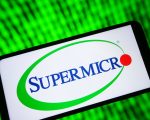
WW International is steering hard in a new direction, hoping to turn the growing interest in obesity medications to its advantage. On paper, the new strategy could be the answer to its problems, but significant execution risks remain. Shares of the Weight Watchers parent are up nearly 50% on Tuesday after the company announced plans to acquire Sequence, a telehealth platform that provides its subscribers with access to GLP-1 medications like Wegovy and Ozempic. Before this pop, WW shares were down more than 57% over the past year, and it’s no surprise. The company’s sales have been in a steady multiyear decline after an attempt to de-emphasize weight loss and focus on wellness failed miserably. WW 1Y mountain The parent of Weight Watchers has seen its market value shrink as sales have dropped for several years. With a new CEO, Sima Sistani, at the helm, the company has returned to its weight loss roots, but the buzz around weight loss medications is a clear threat to the company. Sequence’s acquisition will give WW a foothold in the clinical weight loss space, but the company has a lot of lost ground to make up. Obesity drugs have been a gamechanger Initially created as a treatment for type 2 diabetes, semaglutide is sold by Novo Nordisk under the brand names Ozempic, Wegovy and Rybelsus. The drug mimics the incretin hormone glucagon-like peptide-1 in the body to make patients feel full and lower blood sugar. Patients report a loss of cravings, which can help them focus on improving eating habits and losing weight. With the drug’s help, patients can lose an average of 15% of their body weight, studies show. Another drug, Eli Lilly’s Mounjaro, adds a second incretin hormone to the mix and has been shown to be even more successful with weight loss. In a clinical trial, some patients lost more than 20% of their initial starting weight. The Food and Drug Administration is expected to approve it for treating weight loss by the end of this year and at least one analyst has predicted it could reach $100 billion in sales by 2035. Consumer focus on these medications has caused shortages of the medication and may even account for some of the weakness Weight Watchers has seen in its own diet business. “Acquisition of Sequence seems like a great move for WW, but it highlights the risk Big Pharma poses to the behavorial approach to weight management,” Alex Fuhrman, an analyst at Craig-Hallum Capital wrote in a research note. WW didn’t offer an earnings forecast for this year, but Fuhrman lowered his estimates to account for weak trends the company has seen at the start of this year. The first quarter, which includes a time when many consumers launch efforts to lose weight with the beginning of a new year, could see a 21% drop in revenue to about $235 million, and an adjusted operating loss of $10 million to $15 million down from profit of $9 million a year ago., the company said. Subscriber counts could fall in the teens range, WW said. WW is intentionally pulling back on marketing spending as it waits to launch new products in the back half of the year, it said. That will help its cost structure as it already has a significant amount of debt, which will grow as it acquires Sequence. The deal, which is expected to close in the second quarter, has a net purchase price of $106 million, and is expected to add to WW’s earnings by the fourth quarter. “With net debt representing more than 11x our revised 2023 EBITDA estimate and interest expense set to rise significantly in 2024 when hedges expire, we remain cautious on the shares and maintain our Hold rating and $4 price target,” Fuhrman wrote in a research note. The Sequence opportunity Sequence launched in 2021, and recently became cash flow positive. It has largely grown by word of mouth, said UBS analyst Michael Lasser. “As of last month, it had 24,000 subscribers that pay $99 per month,” Lasser wrote in a research note. “It’s on pace to have a $25mm revenue run-rate.” The monthly fee gives subscribers access to board-certified clinicians, registered dietitians, fitness coaches and a care coordinator. Lasser predicts that if WW were to convert 10% of its Weight Watchers’ membership base to become Sequence members for at least 10 months, the company could add $400 million to its revenue. That’s on top of the $1.04 billion in sales Lasser is predicting for WW this year. “Still, the consumers that would sign up for Sequence would need to be able to afford the medicine,” Lasser said. “These subscribers would likely need support from their insurance. These are big ‘ifs.’ In the interim, WW will need to turn-around its core membership trends and integrating a brand new element of its offering that is in contrast to its legacy model won’t make that turn-around any easier.” Wegovy has a list price of $1,349 for a pack of four injector pens. While Medicare is prohibited from paying for weight loss medications, at least 80% of commercial insurance companies will pay a portion of that cost, according to Novo Nordisk. However, winning coverage can often require patients to get pre-authorization. That is where a telehealth platform like Sequence can be useful. It’s also worth noting that many consumers who have been successful on the GLP-1 medications have found that they regain some of their weight when they stop taking the medications. This trend could provide an opportunity for the core Weight Watchers brand and its focus on behavior modification. An ‘existential risk’ All in all, Lasser said the acquisition is a significant change for WW and it poses a “sizable” risk. “This is a business that has been disrupted over the last several years. It’s now trying to take big steps to course correct. We think it will take time to see if this action really produces a change in the company’s fortunes,” Lasser said. Morgan Stanley analyst Lauren Schenk said WW’s strategy shift is an “acknowledgement of a key competitive threat that could change the dynamics of the WW’s business meaningfully overtime.” Schenk noted that the FDA has said that weight management medications should only be prescribed alongside behavioral lifestyle changes. If patients are held to this standard, it could help drive subscriber growth. “However, if that simply remains just a recommendation, and not a mandate, and consumers increasingly turn to GLP-1s before other weight loss options, it’s possible it could drive an existential risk to WW’s business,” she said. With an equal-weight rating, Schenk’s base case for WW stock gives it a $3 price target. That scenario assumes Weight Watchers continues to see membership erosion, while cost controls help minimize margin compression. However, she warns the stock could fall as low as 50 cents if it is unable to accelerate its growth and needs to spend more heavily on marketing. In a bull case, Schenk predicts the stock rises as high as $13. That scenario hinges on the company reviving subscriber growth through innovation. —CNBC’s Michael Bloom contributed to this report.








